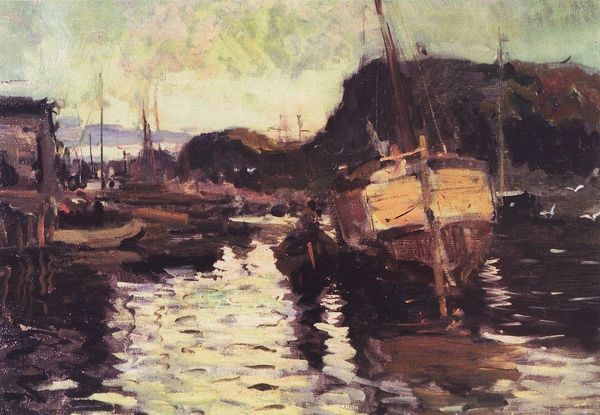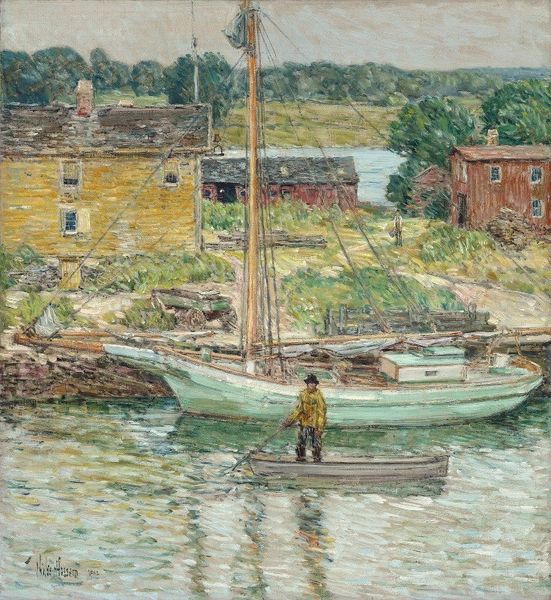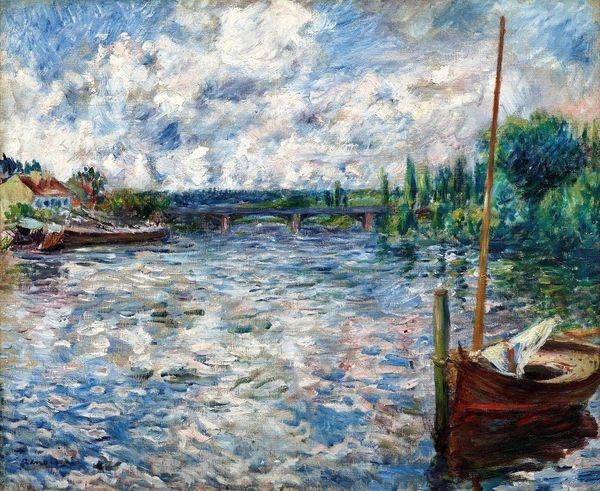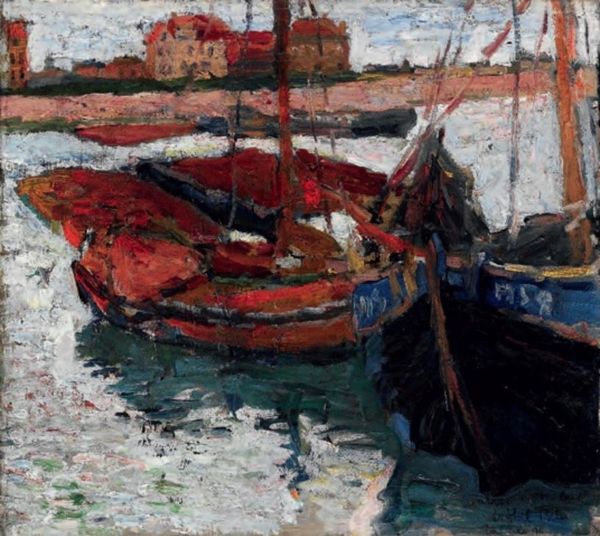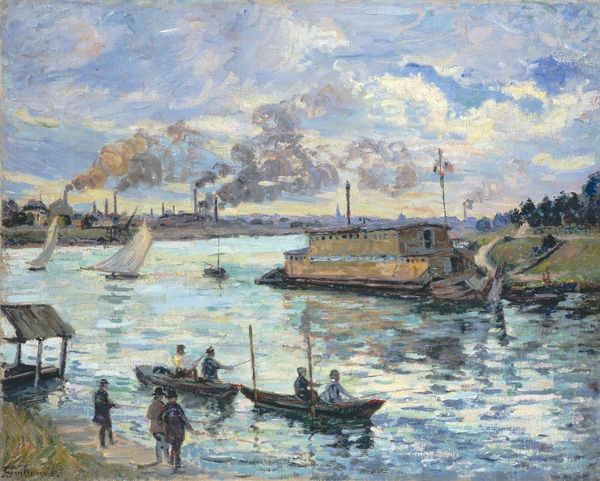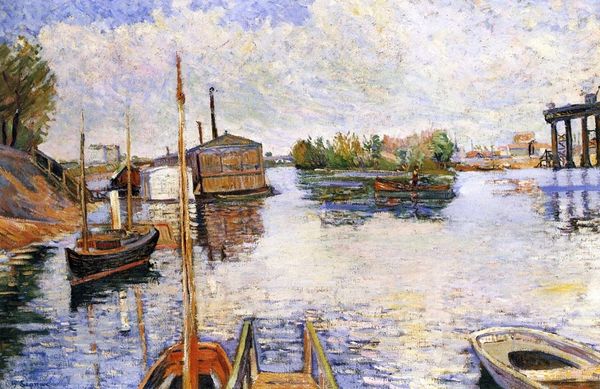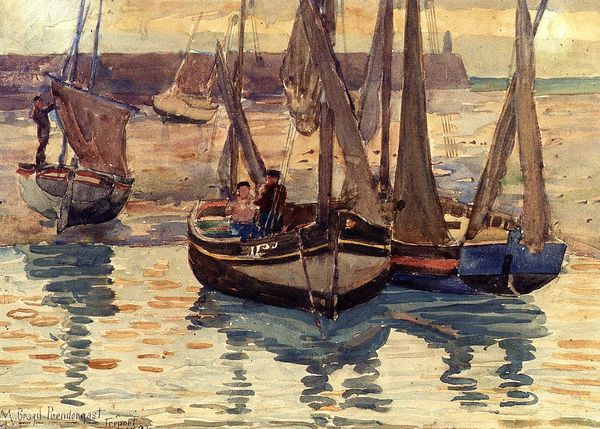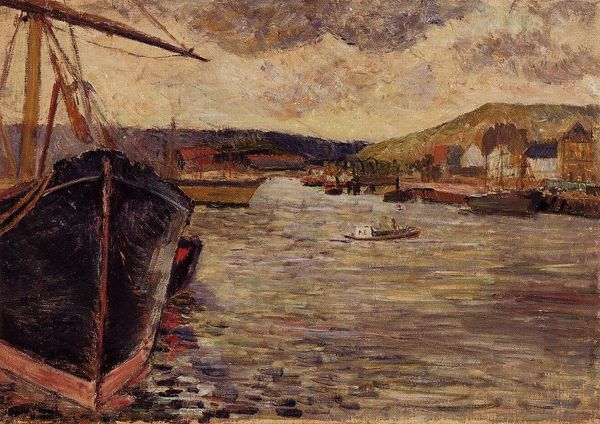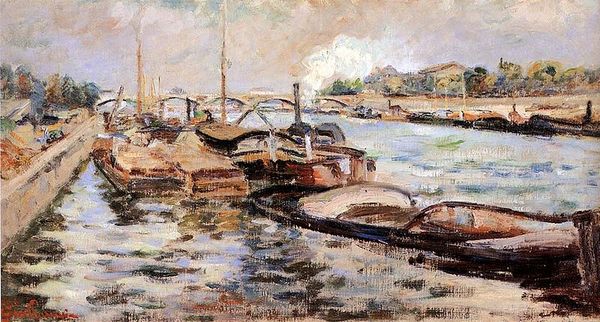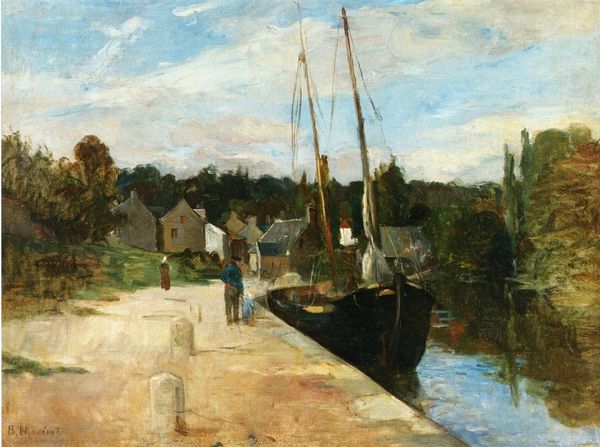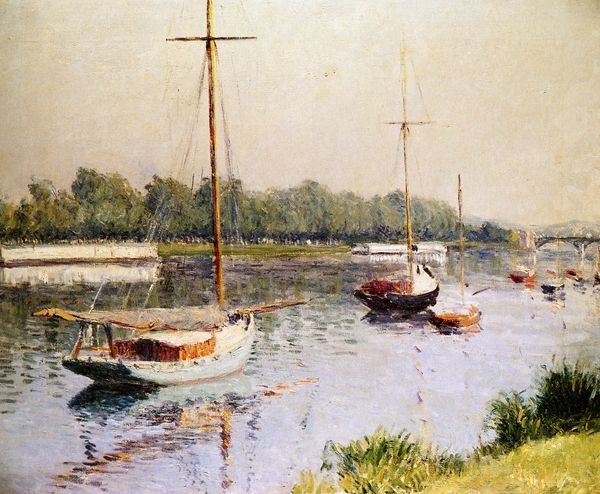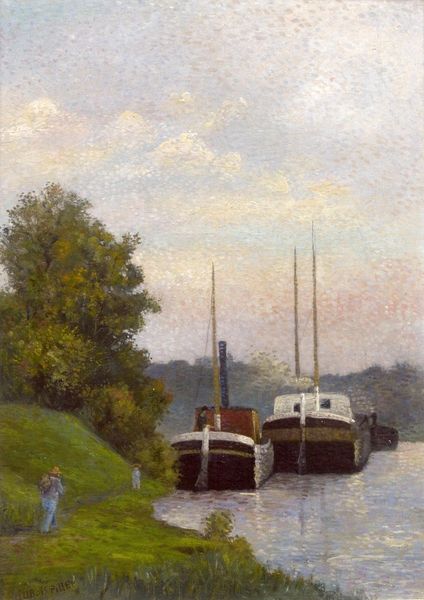
plein-air, oil-paint
#
impressionism
#
plein-air
#
oil-paint
#
landscape
#
impressionist landscape
#
oil painting
#
water
#
cityscape
Copyright: Public Domain: Artvee
Editor: "Barges at Pontoise" by Camille Pissarro, painted in 1876. Looking at it, I am struck by how the dark mass of the barges is set against the lightness of the water and sky. The brushstrokes seem very deliberate. What compositional elements do you find most compelling? Curator: The interplay between mass and void is indeed striking. Note how Pissarro employs a tripartite structure: the solid bank in the foreground, the horizontal water expanse leading the eye, and the looser handling of the background foliage. Do you perceive a dynamic within this structure? Editor: I think so. The dark vertical chimneys of the barges disrupt the horizontality, giving a sense of movement within the static scene. Is this deliberate disruption significant? Curator: Precisely. Consider also the application of paint; thick impasto in the foreground contrasted with thinner washes in the distance. This generates spatial recession. What effect does this textural variation produce for you? Editor: It really makes the foreground feel immediate, as if you could reach out and touch the rough surface of the boats, while the background recedes and blurs. The broken brushstrokes capture light beautifully. I hadn't really noticed how that technique guides my eye until now. Curator: Consider also the strategic deployment of complementary colours—touches of orange against the dominant blues and greens—that invigorate the composition and create vibrant contrasts, rather than creating an overtly romanticised scene. It’s an almost scientific observation of light and form. Editor: It's amazing how much the careful application of the formal elements changes how I experience the image. Thank you for shedding light on Pissarro's technique! Curator: It is in decoding these choices that the profound artistic message arises. I leave you with a final question: in its construction of light and shadow, space and volume, what statement, do you suppose, does this arrangement seem to posit?
Comments
No comments
Be the first to comment and join the conversation on the ultimate creative platform.
